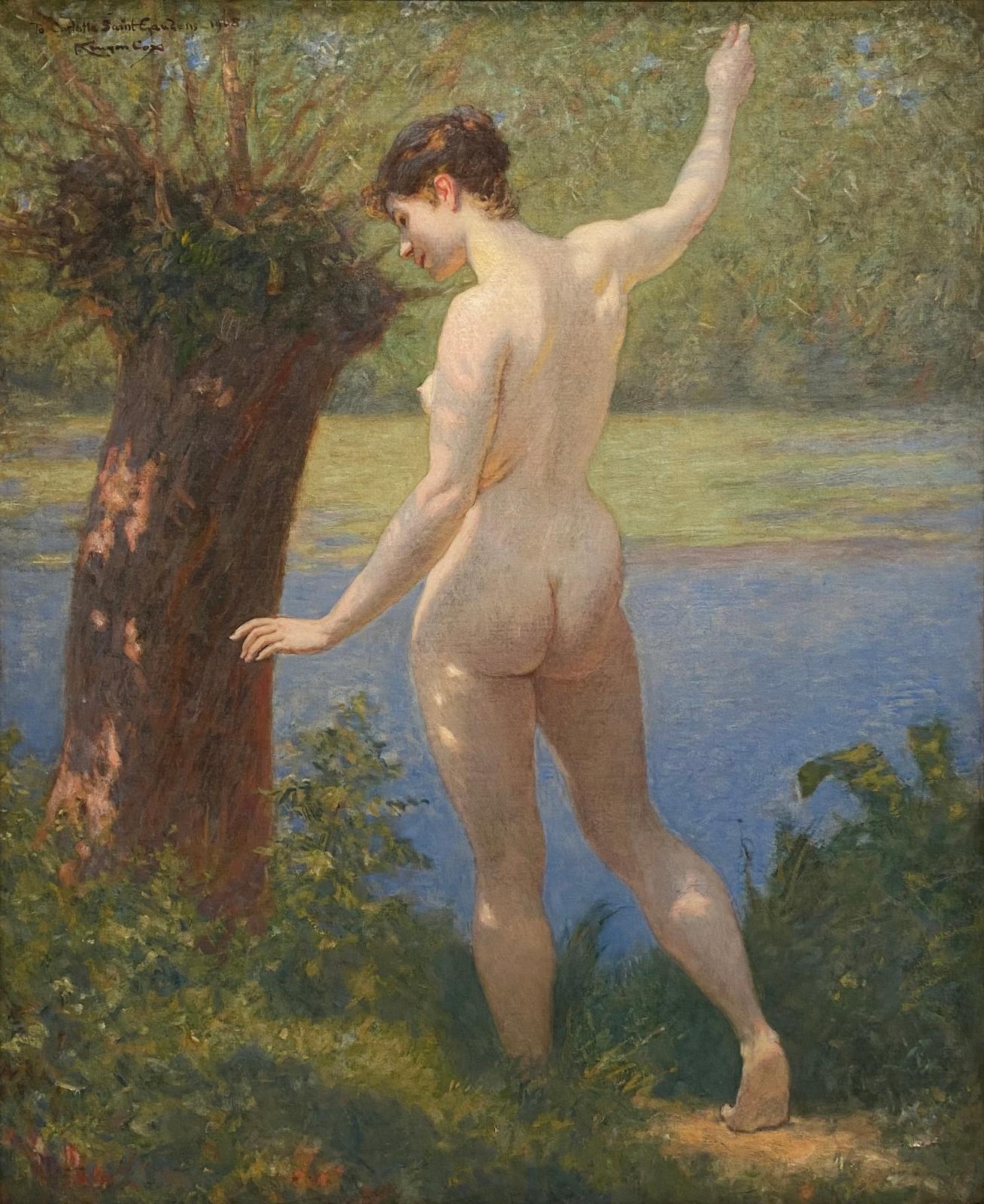artist
The nude was the subject for which Cox was best known. He is also greatly celebrated for his mural work that very often included nudes or partially draped forms. In Cox's early years in Paris he became interested in plein aire painting, which in the 1870's was considered a modernist movement. He did not leave behind classical techniques and traditions but tried to integrate the two. He often worked out of doors and preferred an even light that did not overwhelm the subject. Cox imbued his female form with a classical notion of exaltation and loftiness yet firmly felt that there should be a realism that made them earthy. William Coffin, a close friend wrote "No painter amongst us has a purer sense of beauty in the ideal and no one has a keener perception of grace in form and distinction of color in nature."

















